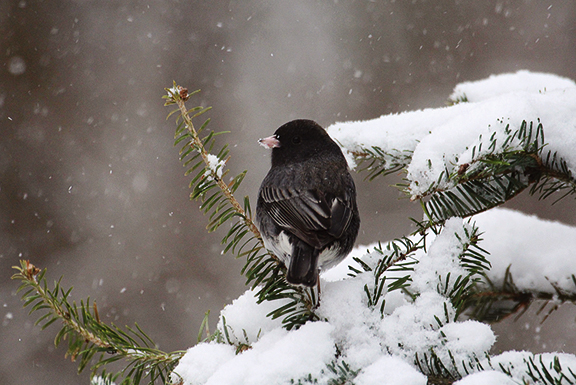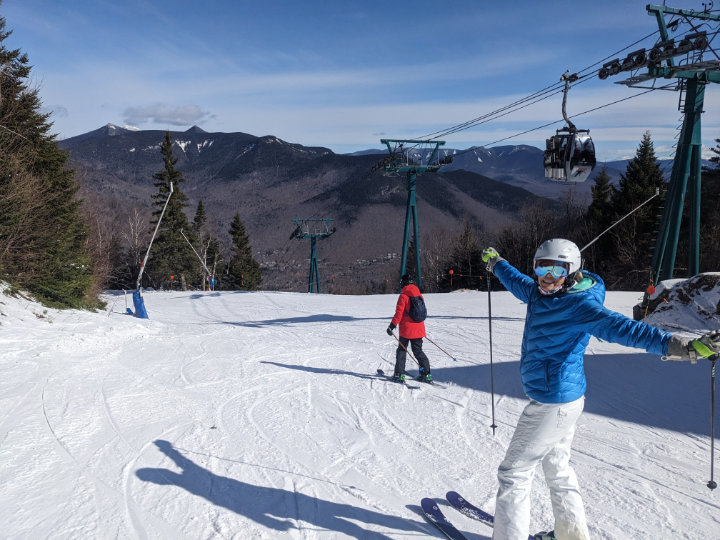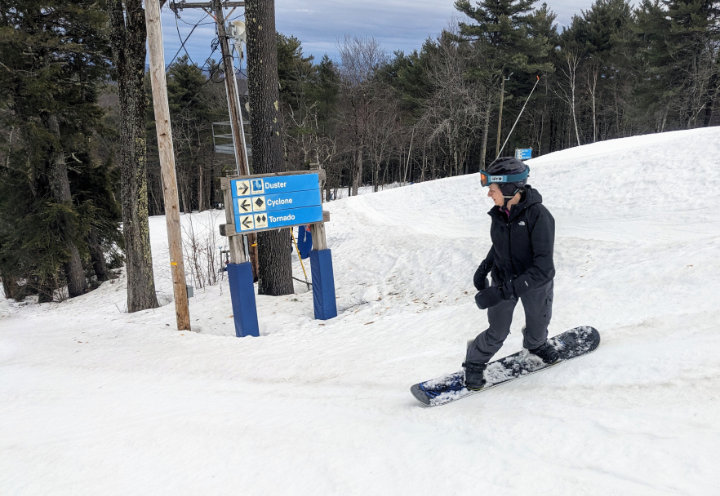Squirrels & Birds & Bears!

Where Were They & Why They’re Coming Back
by Dan Seufert
Weirs Times Correspondent
If you’ve noticed a change in the mix of backyard animals this year, you’re not alone.
There are far fewer squirrels. There haven’t been as many bear meddling with bird feeders, and some birds – especially blue jays and juncos – have been noticeably absent from the New Hampshire scene in the past nine months, wildlife experts say.
But the changes are explainable, and in many cases, they were predicted. And there is good news for fans of the traditional habitat: the birds, the bears, and the squirrels are on the plus side of a natural rebound.
There were some startling drops in backyard animal counts in the past year, including a 75 percent decline in the number of blue jays observed statewide in the winter, spring, and fall, and a huge drop in the number of squirrels observed this summer from the summer of 2018.
But the experts say there is no catastrophic event to blame, and there is no long-term decline seen in the populations of these animals. Rather, Mother Nature is making corrections.

“There is no sign of a general population decline,” said Rebecca Suomala, a biologist with New Hampshire Audubon and the organization’s Backyard Winter Bird Survey coordinator. “There have just been a lot of natural fluctuations.”
Wildlife experts say changes started happening two years ago, when the fall brought an enormous crop of “mast” food – acorns and nuts from trees that smaller animals depend on to live. In the fall of 2017, there was an abundant crop of acorns, seeds, and nuts, and the animals, especially squirrels and chipmunks, ate very well.
Andy Timmins, a wildlife biologist with New Hampshire Fish and Game who leads the agency’s Bear Project, recalls that a year ago, there were seemingly too many squirrels, so many that complaints came in from people reporting large numbers of squirrel and chipmunk carcasses littering roadways.
That’s because many factors, such as drought periods and unusually warm weather trends, left the state with an unusually low amount of mast food last year at this time. That left squirrels and other animals scrambling, often across roads, to find enough food for the winter, he said.

Nature took its course, and there was a “massive” amount of squirrels that did not survive, despite their population boom in months previous. And though it’s difficult to count the squirrel population, there aren’t nearly as many around as usual now, he said.
The number of bear interactions with people has also dropped this year, Timmins said. The number of bears does not appear to have dropped significantly, but their feeding habits changed somewhat due to the changes in their food supply.
“The number of bear interactions and conflicts with people have been far fewer this year,” he said.
State residents found far fewer of their normal birds at their feeders last fall and winter, and many called New Hampshire Audubon noting the changes, particularly in jays and juncos. Wildlife experts knew there might be a big drop in reports of backyard birds because the fall food supply had been so poor.
Biologists explained, though, that the birds had not really left the state.
“Birds will move south or to another area in response to food supplies or weather, and in 2017 the exceptional natural food crop of berries, seeds, nuts, and cones, provided birds and squirrels with plenty of natural food,” Suomala said.
“In the fall of 2018, natural food crops were very poor. Some birds left for the winter, but they are not gone.”

Data from New Hampshire Audubon’s annual Backyard Winter Birds Survey, a count taken with the help of volunteers, proved the point.
In 2018 a total of 5,701 blue jays were counted, which is about average, she said. But this year’s count showed a record low of 1,411.
The count of dark-eyed juncos in 2018 was a record high of 22,303, four times the average. Last winter’s count was 2,753, which was not a record low but was still disappointing, she said.
Still, there is no sign of a population decline of either species when you look at the long term data,” she said.
Timmins and Suomala said the outlook for the small animals is promising, as this fall there has been an abundant supply of mast food to the state. That should bring normal levels of backyard birds and animals, they said.
New Hampshire Audubon could use help in counting wildlife this year. Anyone can participate in the Backyard Winter Birds Survey by going to https://nhbirdrecords.org/backyard-winter-bird-survey.
To receive a participation packet, email your mailing address to bwbs@nhaudubon.org. You can also report your results on-line.
http://www.nhaudubon.org/get-outside/birding/data-form-instruction,and the 2018 summary can be found at: https://nhbirdrecords.org/prior-years-bwbs-survey-results.



